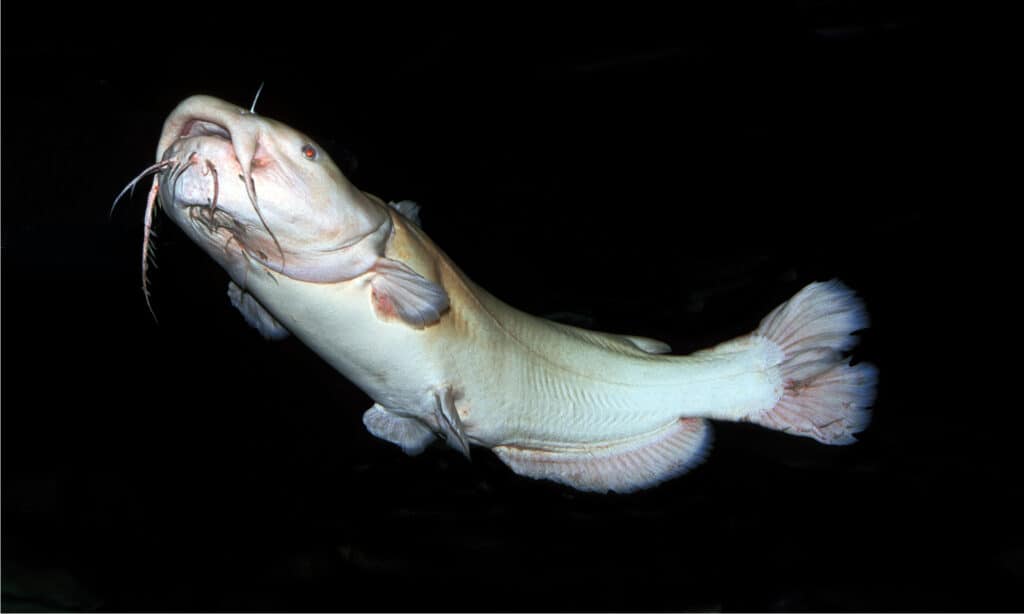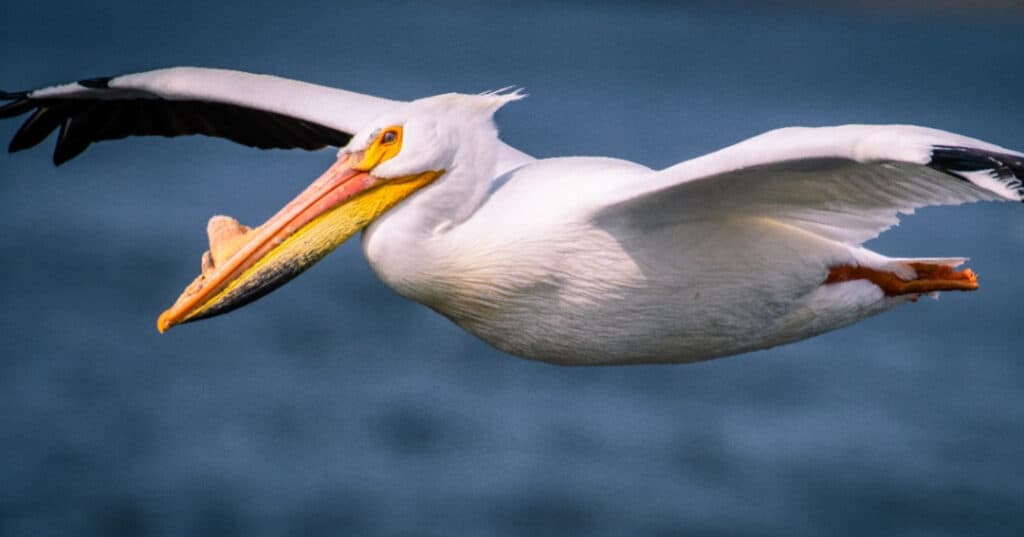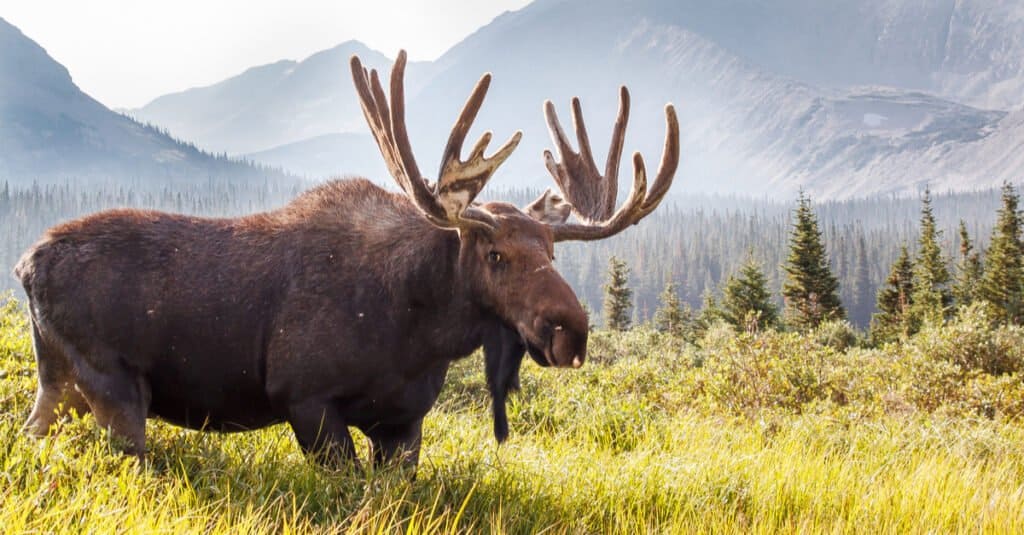Commonly called the “Land of 10,000 Lakes”, Minnesota is well known for its many large lakes and several rivers flowing through the state (including the Mississippi). These rich freshwater habitats are teeming with wildlife, but so too is the rest of the state. Much of Minnesota is covered with thick forest regions, while other parts give way to vast open prairies, which are the perfect home for different animals. If you’re out and about in Minnesota, you might want to know some of the largest animals in the state. So read on to learn about the 10 largest animals in Minnesota!
American Black Bear

American black bears are the only bears in Minnesota and weigh up to 550 pounds.
©BGSmith/Shutterstock.com
The only species of bear to inhabit Minnesota is the American black bear which typically weighs up to 550 pounds. Black bears are crepuscular and forage mainly around dawn and dusk. They are omnivorous and eat a range of grass, plants, fruit, and berries, as well as insects, fish, mule, and white-tailed deer fawns. Black bears live in forest areas with thick vegetation, and they are often found on mountains at elevations between 1,300 to 9,800 feet. In Minnesota, they are generally found in the state’s northern regions. However, they can also be seen in the Vince Shute Wildlife Sanctuary, the largest black bear sanctuary.
Bullsnake

When threatened, the bullsnake rears up in an S-shape, hisses, and vibrates its tail to mimic the venomous rattlesnake.
©Markparker1983/Shutterstock.com
The largest snake in Minnesota is the bullsnake which can reach lengths of approximately 8 feet. Bullsnakes are a subspecies of gopher snakes and are typically a yellowish brown with black, white, yellow, or red blotches on them. Although not venomous, bullsnakes can be extremely defensive when disturbed, rearing up while hissing violently and vibrating their tail. This behavior often makes them mistaken for the similar-looking western diamondback rattlesnake, which is venomous. However, bullsnakes kill by constriction and prey on rodents, birds, and lizards. Their preferred habitats are open prairies and grasslands – often on steep hillsides. In Minnesota, they are most often seen in the counties nearest the Mississippi, Minnesota, and St Croix rivers.
Giant Water Bug

Giant water bugs reach 2.5 inches long and have large, oval-shaped bodies.
©iStock.com/ViniSouza128
Also known as “toe biters,” giant water bugs are something you probably won’t be keen to come across. They get this nickname because they can deliver a painful bite if disturbed or picked up. These huge bugs are 2 to 2.5 inches long and have oval-shaped bodies from dark brown to black. Giant water bugs live in ponds, streams, and swamps, where they prey on small fish, crabs, snails, insects, and tadpoles. Giant water bugs are common right across Minnesota.
Lake Sturgeon

Lake sturgeon fishing is both popular and extremely rewarding — lake sturgeon can measure up to 7 feet!
©Fabien Monteil/Shutterstock.com
Some of the largest fish in Minnesota are lake sturgeon which can reach around 7 feet long. Lake sturgeon are freshwater fish inhabiting North American ponds, rivers, and lakes. They have a unique appearance with rows of bony plates along their sides and barbels on their face. Despite their size, they only prey on small animals such as worms, leeches, and insect larvae. Lake sturgeon are an endangered species largely due to overfishing. Minnesota’s best places to find lake sturgeon are the Rainy River and the Lake of the Woods.
Bald Eagle

Bald Eagles have a huge wingspan of more than 7 feet.
©Jack Molan/Shutterstock.com
The best-known bird in Minnesota is the bald eagle, the national bird of the US. Bald eagles are easily distinguishable with their dark-colored plumage and white heads. They have a huge wingspan of 5ft 11ins to 7ft 7ins and also build the largest nests of any bird in the world. Bald eagles don’t build a new nest yearly; they simply keep adding more material to the existing one. This means that the nest eventually ends up very large; some can be up to 20 feet deep and 9 feet wide. Bald eagles are sea eagles typically found near large bodies of water such as lakes or along coastlines. Some of Minnesota’s best places to see bald eagles are Red Wing and Wabasha, located along the Mississippi River.
Timber Rattlesnake

Timber rattlesnakes are large venomous snakes that can reach 6 feet long.
©Frode Jacobsen/Shutterstock.com
Minnesota has only two venomous snakes, and the longest is the timber rattlesnake. Timber rattlesnakes are 3 to 6 feet long and have yellowish-brown bodies with brown or black crossband markings. Timber rattlesnakes typically live in forested regions, although females favor open rocky areas where they can bask in the sun. In Minnesota, timber rattlesnakes are most often found in the valleys around the Mississippi River. Timber rattlesnakes are highly venomous as they have large fangs and produce a high amount of venom. However, they are generally quite calm snakes and give plenty of warning rattles before they do strike. Their diet mainly consists of rodents, birds, frogs, and other snakes- especially garter snakes. Predators of timber rattlesnakes include coyotes, bobcats, foxes, and owls.
Flathead Catfish

Flathead Catfish can weigh up to 123 pounds.
©slowmotiongli/Shutterstock.com
Another large fish is the flathead catfish which can reach 4 feet long and weigh up to 123 pounds. Flathead catfish are usually a pale yellow to brown color with black or brown markings, which give them a mottled appearance. They are carnivorous fish and prey on various fish, insects, and crustaceans. However, they feed entirely on fish once they exceed 9.8 inches long. Flathead catfish live in lakes and slow-moving rivers and are extremely popular as a sport fish due to their size. Flathead catfish are usually found in the southern region of Minnesota – particularly in the St Croix, Mississippi, and Minnesota rivers.
Dragonhunter Dragonfly

Dragonhunters are large dragonflies, reaching around 3.5 inches long.
©Gerald A DeBoer/Shutterstock.com
One of the largest insects and the largest dragonfly in Minnesota is the dragonhunter which ranges between 3 and 3.5 inches long. Dragonhunters are a stunning black and yellow color, with females having slightly larger yellow spots on their abdomen than males. Males can be further distinguished as they tend to curl their abdomen while flying. Dragonhunters typically live near bodies of water, such as rivers and streams, where they can be found on the vegetation near shore. St Croix River is generally a good place to see them in Minnesota. Dragonhunters prey on butterflies, wasps, hornets, and other dragonflies.
American White Pelican

American white pelicans have a wingspan of 9 feet.
©Jerek Vaughn/Shutterstock.com
One of the most stunning birds in Minnesota is the American white pelican, which is also one of the largest. American white pelicans have a massive wingspan of approximately 9 feet. These large white birds are also easily distinguished by their long beak, typically 10 to 15 inches long. American white pelicans nest in huge colonies consisting of several hundred birds on the islands of large lakes. Nests are usually a simple depression on the ground with a few twigs. American white pelicans typically prey on fish and amphibians; all caught as the birds swim. Marsh Lake, Pigeon Lake, Leech Lake, and Lake Johanna are the best places to see these birds in Minnesota.
Moose

Moose are the largest animals in Minnesota, weighing 1,500 pounds.
©Michael Liggett/Shutterstock.com
The largest animal in Minnesota is the moose, the largest member of the deer family. Moose stands a staggering 4ft 7ins to 6ft 11ins at the shoulder and typically weigh 1,500 pounds. The huge animal makes for an imposing sight with its broad, open-shaped antlers. Moose typically live in large forests, although it’s not uncommon to find them near water. In fact, moose have a unique adaptation that allows them to eat while underwater – they can close their nostrils. This is because their nostrils are covered with fatty pads of tissue that they can close and allow them to chew underwater. One of Minnesota’s best places to spot moose is the 57-mile-long Gunflint Trail.
Summary of The 10 Largest Animals In Minnesota, And Where You’ll Find Them
| Rank | Animal | Size | Place |
|---|---|---|---|
| 1 | Moose | 4ft 7ins to 6ft 11ins | Gunflint Trail |
| 2 | American white pelican | 9 foot wingspan | Marsh Lake, Pigeon Lake, Leech Lake, and Lake Johanna |
| 3 | Dragonhunter Dragonfly | 3.5 inches long | St Croix River |
| 4 | Flathead Catfish | 4 feet long and up to 123 pounds | St Croix, Mississippi, and Minnesota Rivers |
| 5 | Timber Rattlesnake | 3 to 6 feet long | Valleys around the Mississippi River |
| 6 | Bald Eagle | Wingspan over 7 feet | Red Wing and Wabasha |
| 7 | Lake sturgeon | 7 feet long | Rainy River and the Lake of the Woods. |
| 8 | Giant water bugs | 2.4 inches long | Across the State |
| 9 | Bullsnake | 8 feet | counties nearest the Mississippi, Minnesota, and St Croix rivers. |
| 10 | American Black Bear | 550 pounds | Vince Shute Wildlife Sanctuary |
The photo featured at the top of this post is © iStock.com/RichardSeeley
Thank you for reading! Have some feedback for us? Contact the AZ Animals editorial team.






